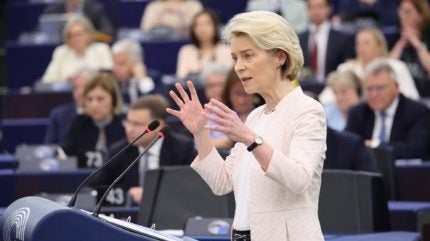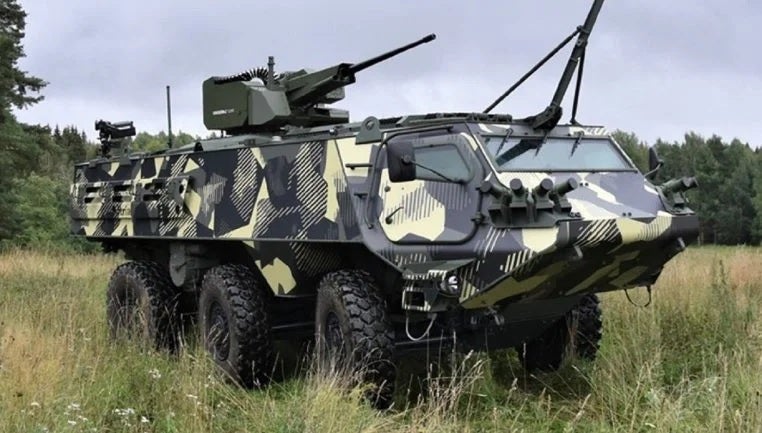
Newly re-elected European Commission President Ursula von der Leyen has called for the formation of a European Defence Union and the creation of a defence single market across the continent’s member states, amid external threats posed by Russia.
Delivering a statement on 18 July 2024, in Strasbourg ahead of a secret ballot of the European Parliament to choose a new EC president – or re-elect the incumbent – von der Leyen told European parliamentarians that the European Union had to spend more on defence, but ensure it remained within its members, and its borders.

Discover B2B Marketing That Performs
Combine business intelligence and editorial excellence to reach engaged professionals across 36 leading media platforms.
Despite having advanced defence industrial complexes, European countries regularly head to the US or Israel to secure leading military capabilities, with Germany as one example in 2022 selecting US-origin F-35 fighters and Chinook heavy lift helicopters in 2023 in multi-billion-euro deals.
Poland too has sought to acquire tanks, artillery, and other systems from South Korea, while most Nato countries in Europe have also opted to acquire the F-35 fighter from the United States.

France and Sweden are rare outliers in the European Union in actively choosing to prefer indigenous military systems over overseas imports, despite not having the benefits of economies of scale that US-supplied equipment provides.
There is no doubt that the reliance on US equipment is squarely in the crosshairs of von der Leyen, who is keen to engender a pro-European preference among defence spenders.

US Tariffs are shifting - will you react or anticipate?
Don’t let policy changes catch you off guard. Stay proactive with real-time data and expert analysis.
By GlobalData“Protecting Europe is Europe’s duty. I believe now is therefore the time to build a true European Defence Union. Yes, I know there are some who are perhaps uncomfortable with the idea. But what we should be uncomfortable about are the threats to our security,” von der Leyen told European parliamentarians.
“Let us be clear: member states will retain responsibility for their national security and their armies and Nato will remain the pillar of our collective defence. But we all know very well that our spending on defence is too low and ineffective, our foreign spending is too great.”
To this end, von der Leyen called for the creation of a “single market for defence”, where EU member states invest in “common European projects”.
Such programmes are already underway, through initiatives such as the CAVS mechanised infantry vehicle and the European Patrol Corvette. Platforms such the Boxer armoured vehicle are other strong examples of European cooperation in defence, as well as the Leopard series of main battle tanks.
However, national biases have caused more than one European multinational programme to be axed, with France in particular ever-keen to ensure it retains pre-eminent work shares in cooperative endeavours.
Von der Leyen retains EC presidency
Retaining the presidency of the European Commission, von der Leyen keeps the spot as the most senior administration official within the European Union, acting in some respects as a head of state.
However, von der Leyen’s second term, due to run from 2024-2029, will be markedly different from the preceding five years, with the first stumbling block the outcome of the US presidential election in November, from which the outcome of the Ukraine-Russia war will emerge.





